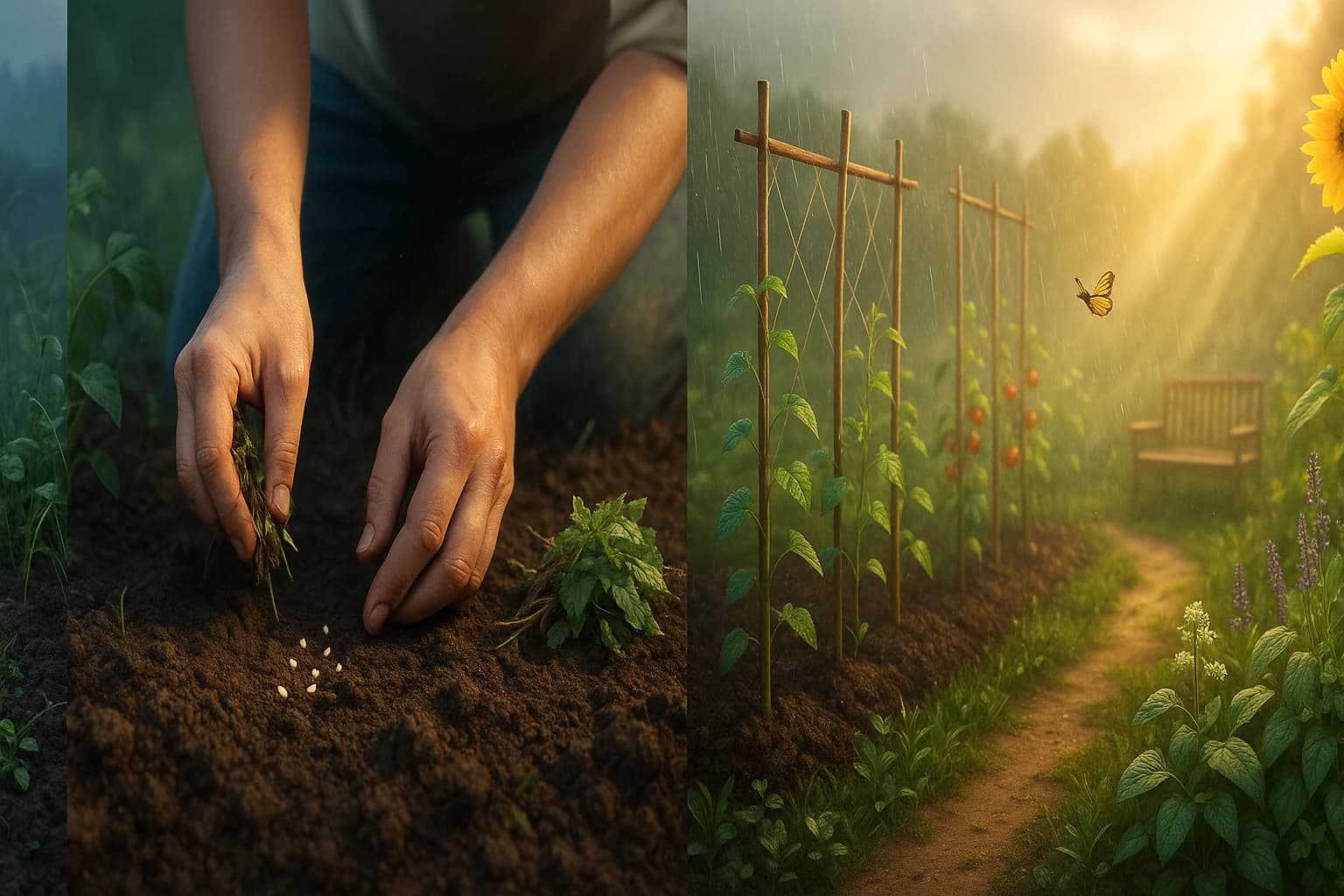Cultivating Happiness by Planting Dreams and Pulling Weeds

Plant dreams, pull weeds, and grow a happy life. — Anonymous
From Metaphor to Method
At first glance, the line reads like a quaint garden tip; on reflection, it is a blueprint for agency. “Plant dreams, pull weeds, and grow a happy life” treats well-being as a deliberate craft: choose what to cultivate, remove what chokes growth, and tend the plot with care. Voltaire’s Candide (1759) closes with the counsel to “cultivate our garden,” urging practical effort over passive wishing. Likewise, contemporary positive psychology emphasizes intentional activities—what we do—more than fixed traits or luck. Seeing life as a garden reframes time and setbacks: progress unfolds in seasons, not sprints, and even dormant periods can prepare roots for future bloom.
Planting Dreams as Intentional Seeds
Having chosen the plot, the first act is planting. Dreams become seeds when translated into concrete intentions and tiny first steps. James Clear’s Atomic Habits (2018) argues that compound growth begins with small, consistent actions; implementation intentions—“I will do X at Y time in Z place”—turn hopes into scheduled behavior. A community gardener once showed me her labeled stakes with expected harvest dates; she said the stick makes the seed accountable. Similarly, naming a date, place, and cue for your next action gives a dream a root system.
Preparing the Soil: Habits and Environment
Yet even good seeds languish in poor soil. Habits, surroundings, and timing form the substrate that either nourishes or starves your aims. BJ Fogg’s Tiny Habits (2019) notes that behavior thrives when prompts are clear and friction is low; placing running shoes by the door or pre-chopping vegetables reduces the effort required to act. Seasons matter, too. Energy and attention ebb and flow, so align demanding work with your personal high-focus windows and reserve lighter tasks for your daily “winter.” In short, design the soil so desired actions become the easy, default choice.
Pulling Weeds: Subtraction for Well-Being
At the same time, weeds spread without permission. Subtracting harm often beats adding good. Nassim Nicholas Taleb’s Antifragile (2012) calls this via negativa: removing sources of fragility—junk inputs, toxic commitments, doomscrolling—steadies the system. Seneca’s Letters (Letter 7, “On Crowds”) cautions that corrosive company can deform our character; choosing nourishing relationships is a form of weeding. Cognitive “weeds” also tangle growth: catastrophizing or all-or-nothing thinking can be pruned with simple cognitive behavioral tools like thought records. Clear a little each day; neglected beds get overrun.
Patience and Daily Tending
After clearing space, growth needs small, regular care. Watering, not floodgates, makes roots strong. Micro-rituals—the five-minute start, a two-line journal, a five-breath pause—compound quietly. The Stanford marshmallow experiment (Mischel, 1972) linked delayed gratification to later outcomes; while later work shows context shapes self-control, the core lesson endures: patience plus structure nurtures long-term harvests. Keep rituals light enough to repeat on hard days, because consistency is the sunshine of change.
Weathering Storms, Learning from Failure
However, no garden avoids frost, pests, or drought. A growth mindset reframes mishaps as data, not verdicts; Carol Dweck’s Mindset (2006) shows how effort and strategy, more than fixed talent, drive improvement. Borrow the after-action review used in the U.S. Army: What did we intend? What happened? Why? What will we do next time? Treat mistakes like fallen leaves—rake them into a pile and compost them into learning.
Harvest, Share, and Strengthen Community
As blooms appear, share the harvest. The Harvard Study of Adult Development (Waldinger, 2015 TED Talk) finds that warm, reliable relationships strongly predict health and happiness. Giving away “produce”—time, encouragement, skills—enriches the soil that will later feed you. Gratitude turns noticing into nourishment; listing three small wins each evening is like arranging a daily bouquet, reminding you of growth you helped cultivate.
Perennial Practice and Seasonal Renewal
Ultimately, a happy life is perennial work, not a single season’s yield. After harvest, compost the leftovers—turn lessons into nutrients for the next cycle—and schedule periodic “weeding days” to keep entropy at bay. In this rhythm, planting dreams and pulling weeds becomes a way of moving through time: grounded in small acts, renewed by seasons, and guided by the quiet satisfaction of tending what you can touch.